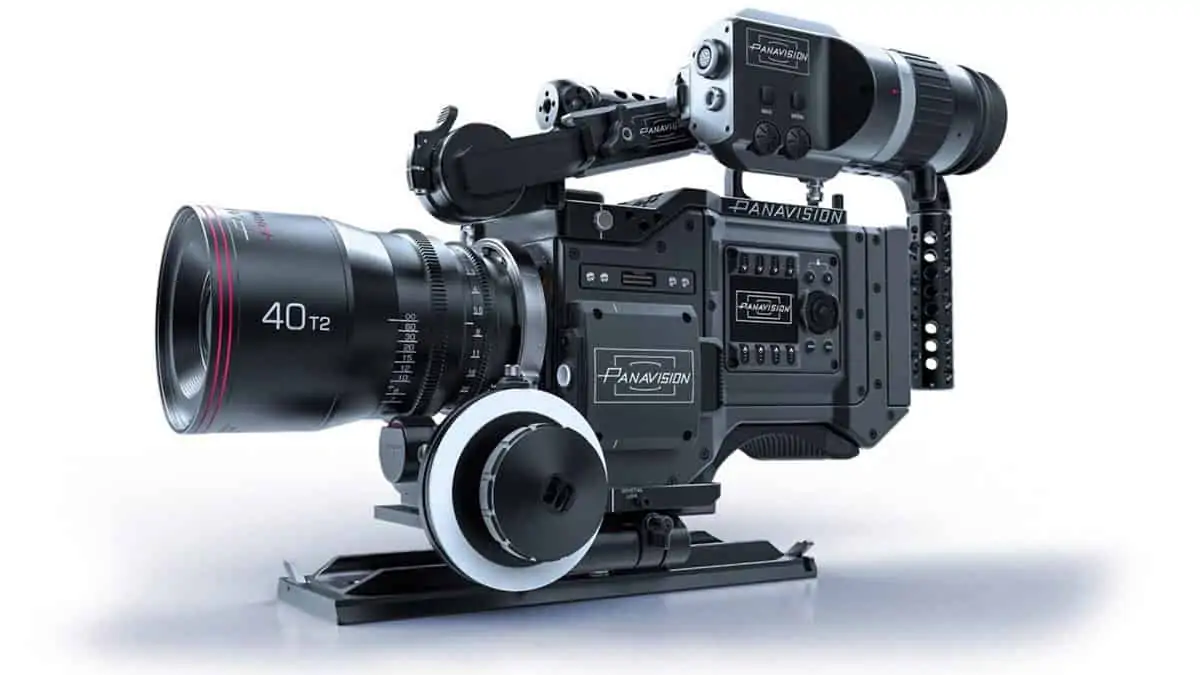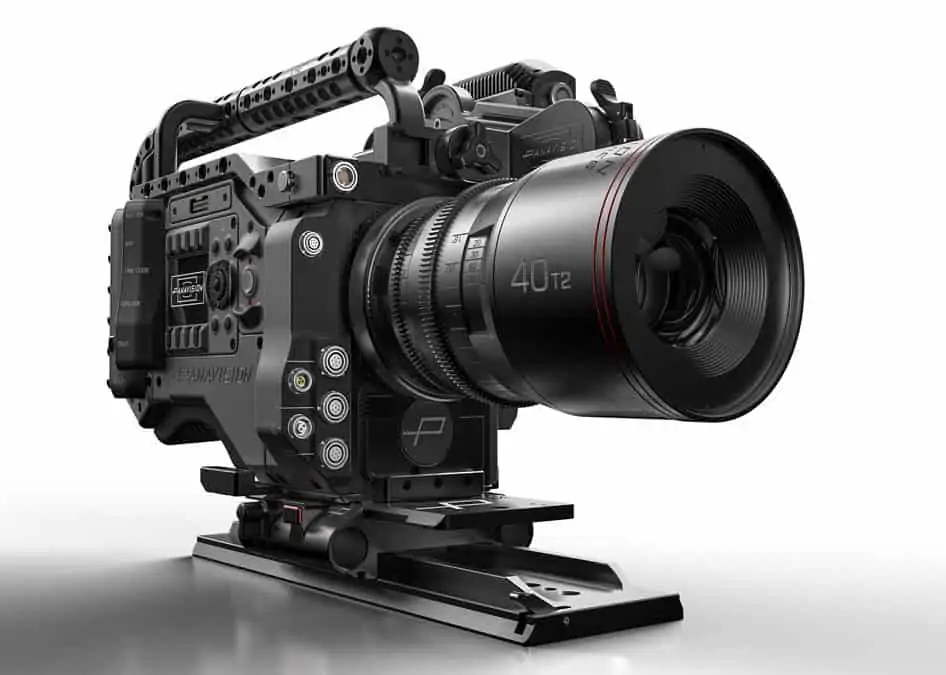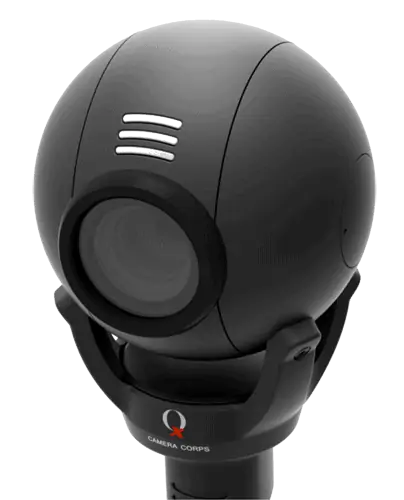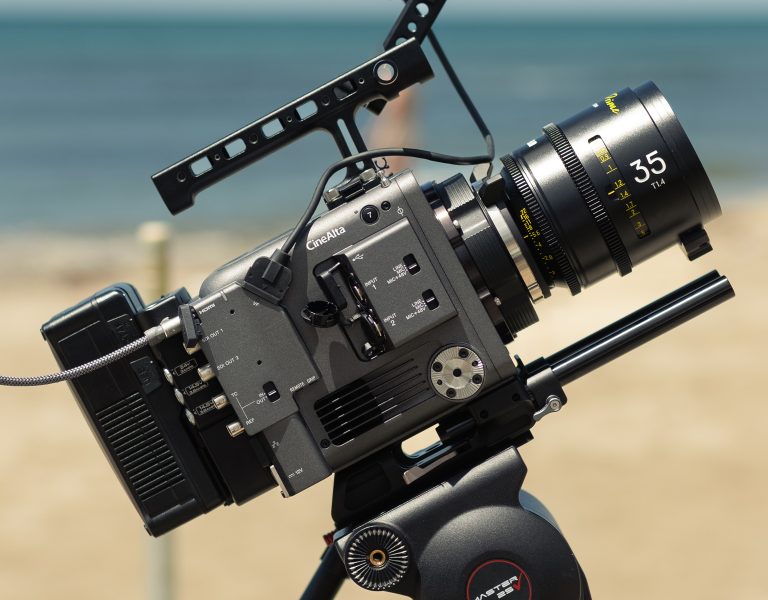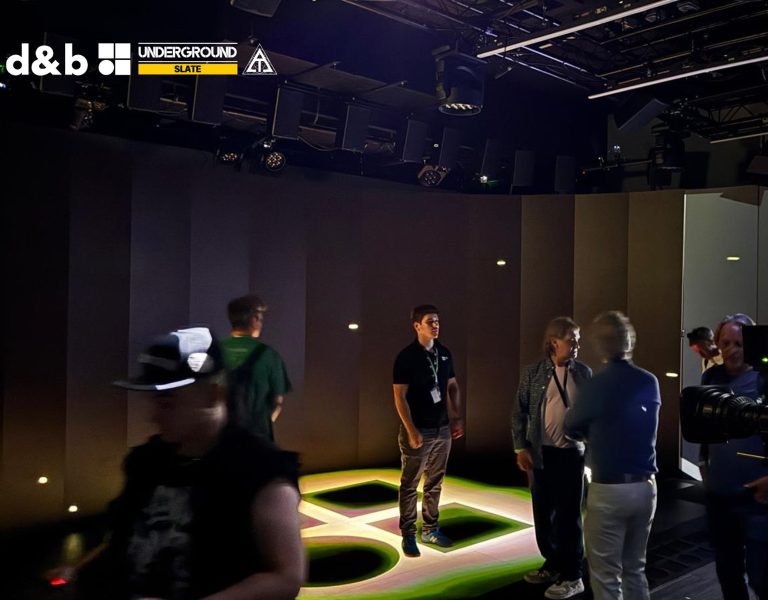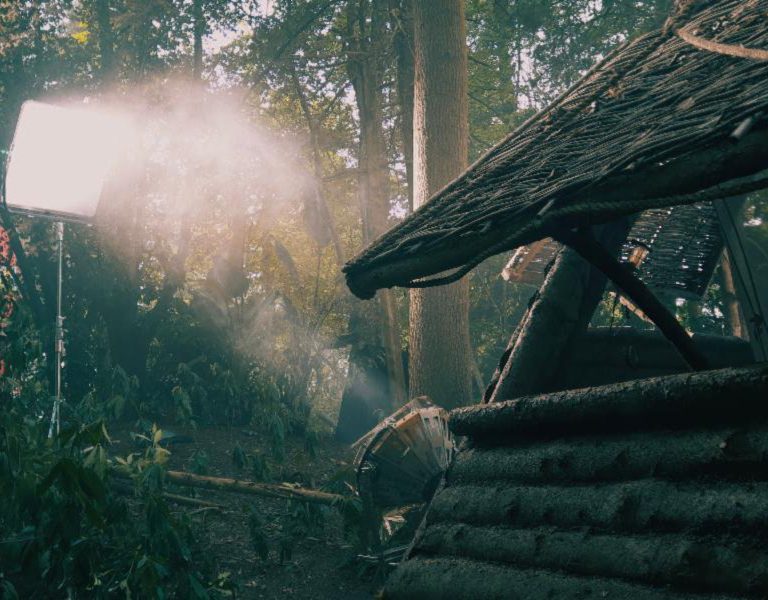Panavision revealed advanced new tools for its unprecedented, large-format Millennium DXL 8K camera at their booth at Cine Gear Expo, June 2-3. Demonstrating the evolution of their innovative approach to filmmaking, Panavision debuted a set of fast, wirelessly controlled Primo Artiste lenses that cover the full 8K HDR image; the world’s first HDR OLED Primo Viewfinder; a new color spectrum filter called PX-Pro; and DXL Control, an iPhone app for remote camera control. These new technologies support Panavision’s Millennium DXL, which was engineered to offer superior creative control over the entire imaging chain.
“The DXL was designed based on feedback from veteran filmmakers who wanted a large format digital system to serve their vision, and these new tools extend that level of innovation,” notes Panavision CEO Kim Snyder. “We are excited that the camera has been met with great enthusiasm for what it offers in terms of creative flexibility and progressive technology at the service of the artist.”
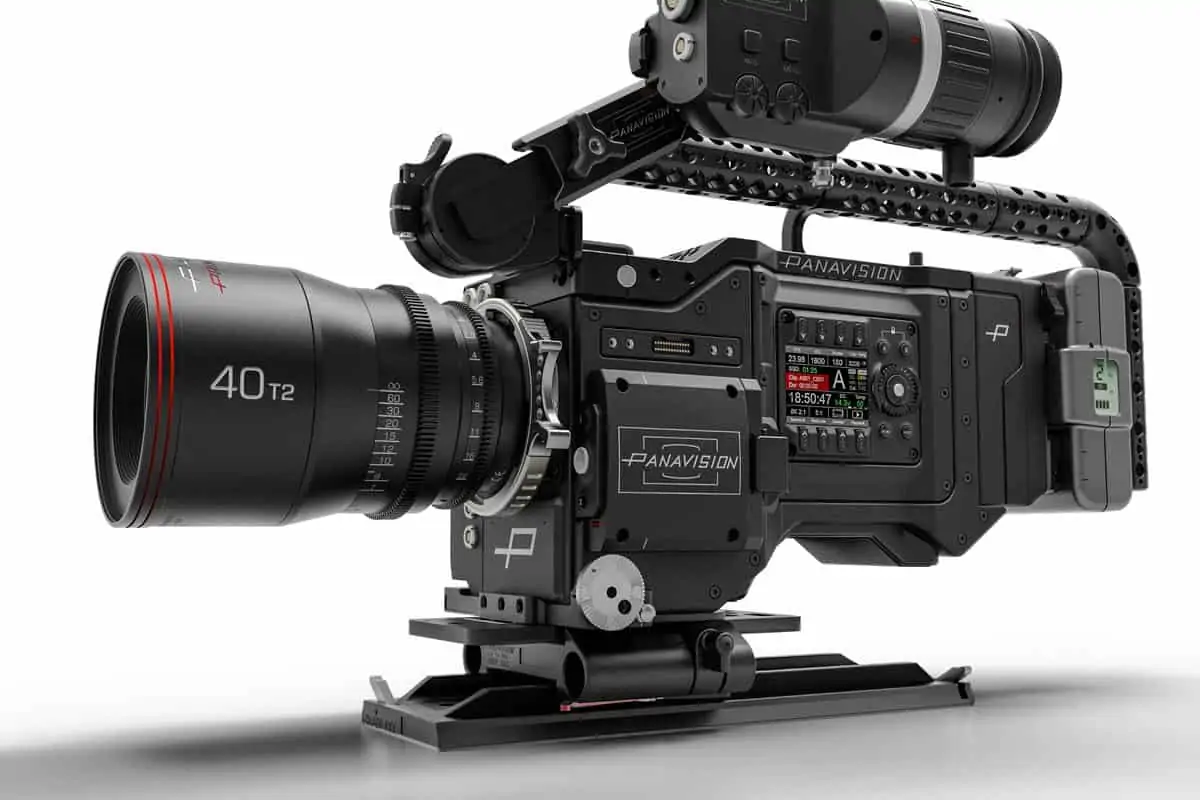
Featuring Panavision’s premier large format optics and modular accessories, advanced 8K sensor technology from RED, and unique color science and workflow optimization from Light Iron, the Millennium DXL has been the camera of choice for numerous productions since becoming available in January. “Filmmakers have chosen the camera to shoot major motion pictures, commercials and TV shows,” says Panavision and Light Iron Senior Vice President of Innovation Michael Cioni. “We’ve been listening to filmmakers and developing top-notch capabilities for the camera, as well as fine-tuning what’s next for its ecosystem. These savvy tools continue our solution-focused efforts to deliver the best in class.”
The Primo Viewfinder is the industry’s first HDR OLED viewfinder. Designed, engineered and manufactured at Panavision, the Primo Viewfinder offers Panavision optics and proprietary mechanics, an HDR OLED screen, 600-nit brightness, image smoothing, a heater, and custom Panavision glass to limit eye fatigue and make it easier to focus in very bright or dark environments. The viewfinder also boasts a theoretical contrast ratio of 1,000,000:1. In creating the Primo Viewfinder, Panavision has made liberal use of customer feedback. “We have been extremely transparent with our trusted customers and shown them iterations along the way,” explains Cioni. “Their fingerprints go into this camera, because it’s their hands that touch the buttons.”
Panavision also showcased a prototype of its PX-Pro color spectrum filter, which ushers in a significant increase in color separation and dramatically higher color precision. The filters provide an infrared (IR) and ultraviolet (UV) cut that improves color clarity and reduces noise and IR contamination, which can corrupt or distort digitally captured images. “PX-Pro was custom made for DXL,” says Haluki Sadahiro, director of Panavision Electronics and Product Development. “It has been specially designed to allow for a wider range of precise color that supports all color palettes and flare characterizes of lenses new and old, while reducing many of the optical artifacts we see on digital cinema cameras.”
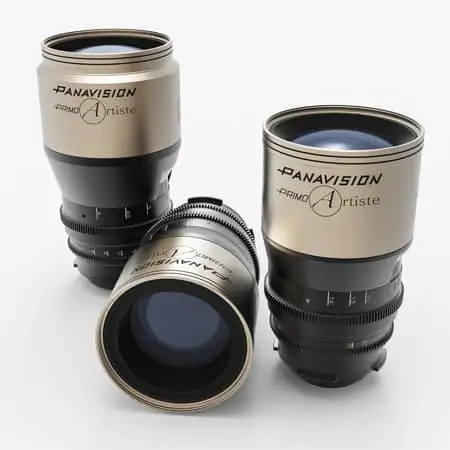 The Primo Artiste lenses, available by the end of 2017, are a full series of T/1.8 Prime lenses, making them the fastest optics available for large format cinematography. The Artiste Series is an evolutionary step in large format optics design, becoming the second series of Panavision lenses to include a fully internalized motor and complete metadata compatibility. The essence of the Artiste concept is an innovative design that takes advantage of the aesthetic flexibility available within large format digital imagers, and the resulting look evokes a quality reminiscent of vintage optics. The series incorporates modern features such as focus breathing control, even field illumination and optimized close focus performance. “The primary goal of the Primo Artiste line is to balance the intricacies of aberration control and the art of lens design to create a lens that produces images that resonate with our instinct to relate to painterly images that are identified by smooth transitions between surrounding objects,” says Panavision VP Optical Engineer and Lens Strategy Dan Sasaki. An added feature of the Primo Artiste series is a true anamorphic glass attachment that retains the spherical nature of the base lens yet induces many of the artifacts associated with anamorphic photography such as directional flares and distorted bokeh. The Artiste lenses will initially come in eleven focal lengths (27mm, 35mm, 40mm, 50mm, 65mm, 80mm, 100mm, 125mm, 150mm, 200mm, and 250mm) with expanded focal lengths available in 2018
The Primo Artiste lenses, available by the end of 2017, are a full series of T/1.8 Prime lenses, making them the fastest optics available for large format cinematography. The Artiste Series is an evolutionary step in large format optics design, becoming the second series of Panavision lenses to include a fully internalized motor and complete metadata compatibility. The essence of the Artiste concept is an innovative design that takes advantage of the aesthetic flexibility available within large format digital imagers, and the resulting look evokes a quality reminiscent of vintage optics. The series incorporates modern features such as focus breathing control, even field illumination and optimized close focus performance. “The primary goal of the Primo Artiste line is to balance the intricacies of aberration control and the art of lens design to create a lens that produces images that resonate with our instinct to relate to painterly images that are identified by smooth transitions between surrounding objects,” says Panavision VP Optical Engineer and Lens Strategy Dan Sasaki. An added feature of the Primo Artiste series is a true anamorphic glass attachment that retains the spherical nature of the base lens yet induces many of the artifacts associated with anamorphic photography such as directional flares and distorted bokeh. The Artiste lenses will initially come in eleven focal lengths (27mm, 35mm, 40mm, 50mm, 65mm, 80mm, 100mm, 125mm, 150mm, 200mm, and 250mm) with expanded focal lengths available in 2018
New DXL Control software mirrors the camera menu system on the user’s Apple device, allowing wireless camera control. “It’s got all the familiar buttons and displays,” says Cioni, who notes the software is available now with a DXL camera rental, and will be available to download for free from the iTunes store starting June 2.
Cine Gear attendees also saw the Millennium DXL in action on three live sets that show different lighting conditions, mounted with the Primo Artiste and the Panavision T Series anamorphic lenses.
Also at the booth, Light Iron had their unique post production solutions on display in a theater via an HDR Video Village Cart showcasing 8K HDR DXL footage. Light Iron representatives will be demonstrating how this system helps cinematographers evaluate their images simultaneously in high dynamic range and standard, or low, dynamic range. Having access to both image specs while in production enables cinematographers to better prepare for post-production color grading, given that distributors are frequently requiring both standard- and high-dynamic range deliverables. Light Iron colorists will also be on hand to discuss the finishing process as well as “Light Iron Color,” which is the custom color science built into the DXL.
LEE Filters exhibited their ProGlass Cine range of neutral-density filters. ProGlass Cine filters are designed to meet the exacting needs of all cinematographers — whether shooting digitally or on film. They are remarkably neutral, eliminating infrared pollution and ensuring all colors remain accurate and true. This simplifies workflow, saves time and enables cinematographers to focus on their creative goals.
